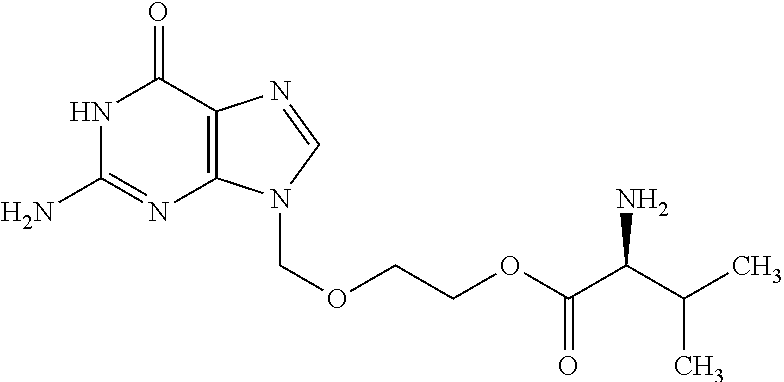Combined systemic and topical treatment of disordered tissues
a virus and disordered tissue technology, applied in the field of virus-related kits and methods, can solve the problems of less effective treatment of viruses near the skin surface and extremely painful neurological conditions, and achieve the effects of reducing or eliminating future outbreaks, shortening the duration of outbreaks, and increasing systemic treatment
- Summary
- Abstract
- Description
- Claims
- Application Information
AI Technical Summary
Benefits of technology
Problems solved by technology
Method used
Image
Examples
example 4
[0236]A female, age 45, with a clinical history of recurrent Herpes Zoster (HZV) (or in layman's terms, shingles) experienced a recurrent outbreak after a stressful week at work and a weekend in the sun following a trip to a tanning booth. (It is known that stress and UV-B can both trigger herpetic outbreaks.) This subject had her first episode with HZV about one year prior. She was diagnosed by her physician and given a prescription for Zovirax (acyclovir). She took the Zovirax, but experienced lesions lasting 3-4 weeks and experienced over 12 weeks of post herpetic neuralgia. The previous episode included all the classic stages, including weeping, but only involved several very small lesions.
[0237]The subject then became aware of preliminary studies combining the use of systemic drugs such as acyclovir and a topically administered anti-infective composition within the scope of the disclosure. The topically administered anti-infective composition (Viroxyn® Professional, used to tre...
example 5
[0241]An 83 year old retired physician phoned Quadex (the manufacturer of Viroxyn® Professional) to dictate her own case history. She was living in an assisted living center when she developed signs and symptoms of herpes zoster (shingles). She did not immediately identify these signs and symptoms and instead thought that they were a mild skin irritation. By the time she realized that she did indeed have shingles, the 72-hour window of effective treatment potential with nucleosides was dangerously close to expiring.
[0242]She prescribed valacyclovir (Valtrex) for herself and requested a ride to the pharmacy. While waiting, she remembered that her dentist had given her a sample 3-pack of Viroxyn® Professional to treat her occasional bouts with herpes labialis (cold sores). While she did not expect that the anti-viral ingredient would be able to treat her shingles, she wanted to take advantage of the benzocaine for temporary relief of the discomfort.
[0243]When she phoned in her case re...
example 6
[0244]A 62 year old female was vacationing in California when she developed a red rash and subsequent lesions on her right buttock. She was diagnosed with herpes zoster (shingles) on day 2 after first signs and symptoms and were noted and was prescribed valacyclovir (Valtrex) per label. However, the Valtrex showed little noticeable effect initially.
[0245]On day 18 after first signs and symptoms, and after having completed a Valtrex regimen as prescribed by a physician, she still had open herpetic lesions and was in so much pain that she found it difficult to sleep and impossible to sit. As flying was the only way to get to her home from California, she and her husband elected to extend their time in California.
[0246]On day 18, her husband was so desperate that he phoned a healthcare provider that he knew who also had experience treating cold sores with Viroxyn® Professional. The husband asked if anything could be done and the healthcare provider phoned Quadex for a consultation with...
PUM
| Property | Measurement | Unit |
|---|---|---|
| specific gravity | aaaaa | aaaaa |
| particle size | aaaaa | aaaaa |
| time | aaaaa | aaaaa |
Abstract
Description
Claims
Application Information
 Login to View More
Login to View More - R&D
- Intellectual Property
- Life Sciences
- Materials
- Tech Scout
- Unparalleled Data Quality
- Higher Quality Content
- 60% Fewer Hallucinations
Browse by: Latest US Patents, China's latest patents, Technical Efficacy Thesaurus, Application Domain, Technology Topic, Popular Technical Reports.
© 2025 PatSnap. All rights reserved.Legal|Privacy policy|Modern Slavery Act Transparency Statement|Sitemap|About US| Contact US: help@patsnap.com



